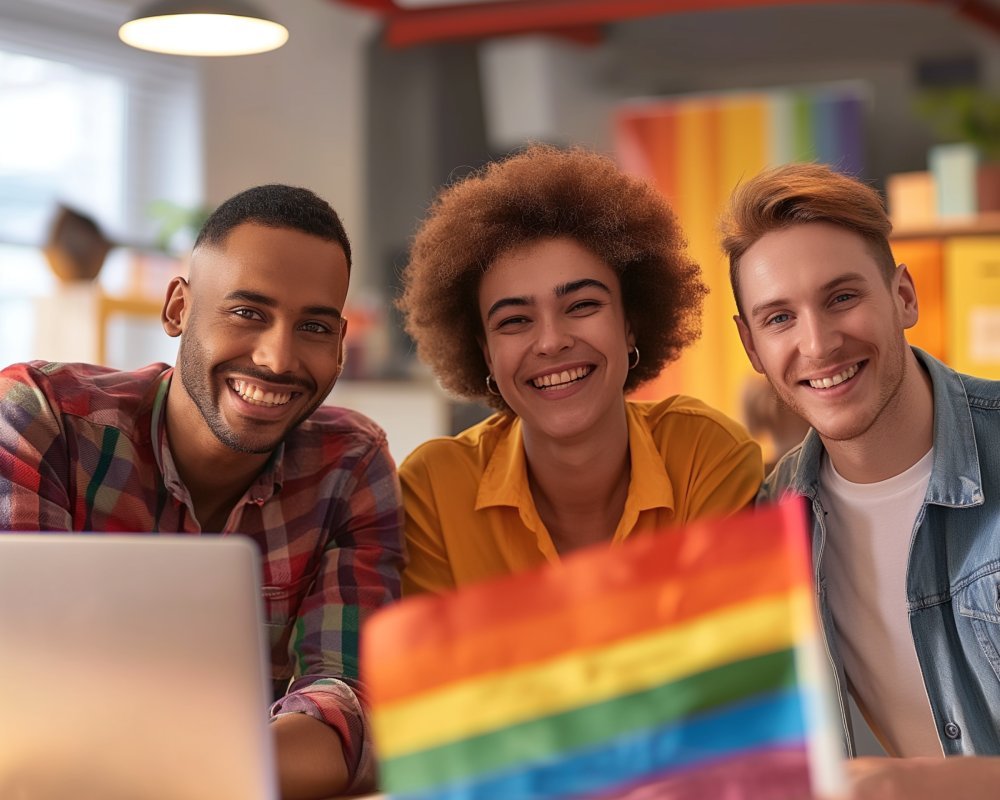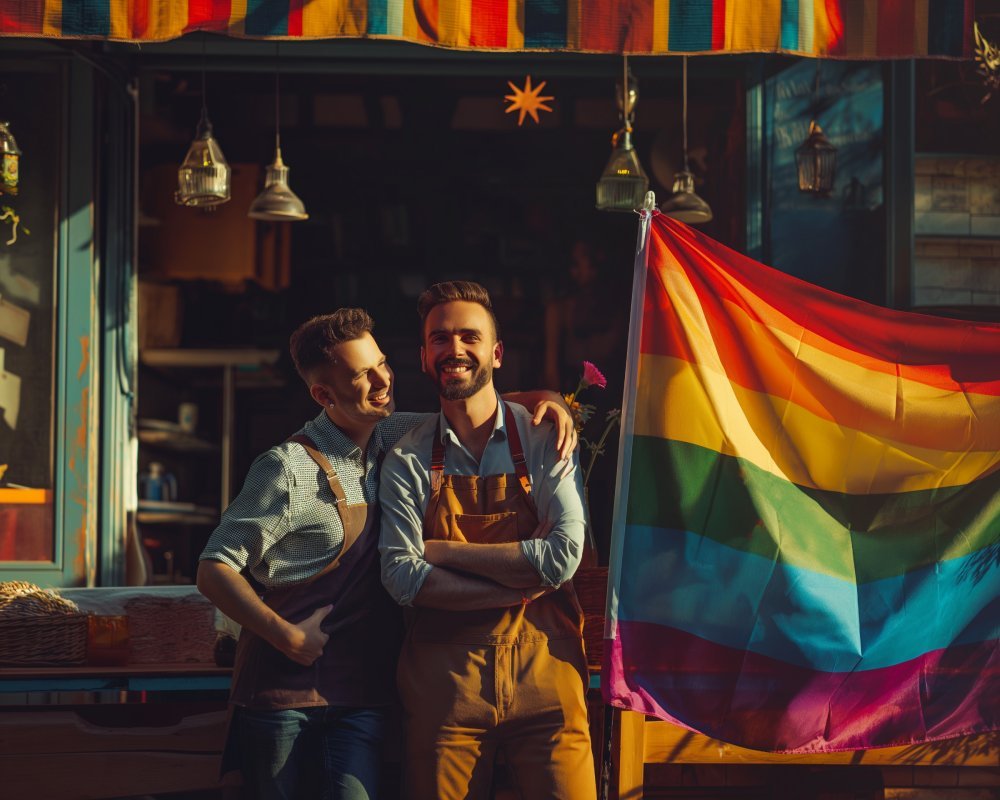
Exploring the History and Impact of Gay Bars – Gay bars have played a crucial role in LGBTQ+ history, serving as safe spaces for the community to gather, socialize, and express themselves freely. These establishments have not only been places to have fun and meet new friends but have also been hubs of activism and resistance against discrimination and oppression. In this blog, we will delve into the rich history of gay bars and explore their impact on LGBTQ+ culture and society. From the Stonewall Inn to modern-day queer bars, these spaces have been instrumental in fostering a sense of belonging and community among LGBTQ+ individuals. Join us as we embark on a journey through the history and impact of gay bars.
Gay bars have been around for decades, offering a sense of camaraderie and acceptance for LGBTQ+ individuals in a world that often marginalizes and stigmatizes them. These establishments have served as havens where people could be themselves without fear of judgment or persecution. Throughout history, gay bars have been at the forefront of the fight for LGBTQ+ rights, providing a platform for activism and advocacy. The Stonewall Inn in New York City, for example, was the site of the famous Stonewall riots in 1969, which marked a turning point in the gay rights movement.
The history of gay bars is closely intertwined with the struggles and triumphs of the LGBTQ+ community. These establishments have been places of refuge and solidarity for individuals who have been ostracized and marginalized because of their sexual orientation or gender identity. Despite facing discrimination and harassment, queer bars have remained resilient, continuing to serve as beacons of hope and empowerment for LGBTQ+ individuals. From drag shows to dance parties, these spaces have offered a sense of belonging and community for generations of queer people.
Origins of Gay Bars
The origins of gay bars can be traced back to the early 20th century, when LGBTQ+ individuals began to establish their own social spaces in response to widespread homophobia and discrimination. The first documented gay bar in the United States was the White Horse Inn in San Francisco, which opened its doors in 1933. Over the years, more gay bars popped up in major cities across the country, providing LGBTQ+ individuals with a sense of community and belonging. These establishments offered a respite from the harsh realities of being queer in a heteronormative society.
Despite facing constant harassment and raids by law enforcement, gay bars continued to thrive and evolve, becoming increasingly important cultural and social institutions within the LGBTQ+ community. The 1950s and 1960s saw a boom in the number of gay bars, as queer people increasingly sought out spaces where they could freely express their identities and connect with others who shared similar experiences. These establishments quickly became symbols of resistance against societal norms and conventions, paving the way for greater visibility and acceptance of LGBTQ+ individuals.
Evolution of Gay Bars
Over the years, gay bars have evolved to meet the changing needs and desires of the LGBTQ+ community. From dingy dive bars to sleek cocktail lounges, these establishments come in all shapes and sizes, catering to a diverse range of tastes and preferences. Today, gay bars offer a wide array of activities and events, including drag shows, karaoke nights, and themed parties, providing a vibrant and welcoming environment for LGBTQ+ individuals to socialize and have fun.
In recent years, the rise of dating apps and online social networking has led to a decline in the popularity of traditional gay bars. However, many establishments have adapted to the changing times by offering unique experiences and services that cannot be replicated online. For example, some gay bars now host drag brunches, trivia nights, and other special events to attract new customers and keep their regulars coming back for more. Despite the challenges they face, gay bars continue to play a vital role in the LGBTQ+ community, serving as gathering places where people can come together to celebrate their identities and create lasting memories.

Impact of Gay Bars
The impact of gay bars on LGBTQ+ culture and society cannot be overstated. These establishments have served as incubators of queer culture, fostering creativity and innovation within the community. From drag queens to leather daddies, gay bars have been instrumental in shaping the identities and aesthetics of LGBTQ+ individuals, providing a space where people can explore and express their true selves without judgment or shame. In addition, these establishments have been vital hubs of activism and advocacy, mobilizing queer people to fight for their rights and demand equal treatment under the law.
One of the most significant impacts of gay bars is their role in building a sense of community and solidarity among LGBTQ+ individuals. These establishments have long been spaces where people can come together to form bonds and friendships that transcend sexual orientation or gender identity. Whether it’s dancing the night away on the dance floor or sharing a drink at the bar, gay bars provide a sense of belonging and acceptance that is often hard to find in the outside world. For many queer people, these establishments are more than just places to have fun – they are sanctuaries where they can be their authentic selves without fear of reprisal or discrimination.
In addition to their cultural and social significance, gay bars also have economic benefits for the LGBTQ+ community. These establishments generate revenue, create jobs, and support local businesses, contributing to the overall economic vitality of the areas in which they are located. By attracting tourists and visitors from all walks of life, gay bars help to showcase the diversity and vibrancy of LGBTQ+ culture, drawing attention to the contributions that queer people make to society. In this way, gay bars play a crucial role in promoting visibility and acceptance for LGBTQ+ individuals, challenging stereotypes and misconceptions about what it means to be queer.
Challenges Faced by Gay Bars
Despite their importance to the LGBTQ+ community, gay bars continue to face challenges and threats to their existence. Gentrification, rising rents, and changing social attitudes have put many queer establishments at risk of closure, forcing them to adapt or shut down altogether. In addition, the COVID-19 pandemic has had a devastating impact on the hospitality industry, with many gay bars struggling to survive in the face of lockdowns and restrictions. As a result, it is more important than ever to support these vital spaces and ensure that they continue to thrive for generations to come.
To counteract these challenges, many LGBTQ+ activists and advocates are calling for increased support and recognition of gay bars as cultural and historical landmarks. By preserving these establishments and their stories, we can ensure that future generations of LGBTQ+ individuals have access to the same sense of community and acceptance that previous generations enjoyed. From fundraising campaigns to advocacy efforts, there are many ways to show your support for gay bars and help them continue to be beacons of hope and empowerment for queer people around the world.
In conclusion, gay bars have played a pivotal role in LGBTQ+ history, offering a sense of community, acceptance, and empowerment for queer individuals. From their origins in the early 20th century to their continued relevance in the modern-day world, these establishments have been instrumental in shaping the identities and experiences of LGBTQ+ people. By exploring the history and impact of gay bars, we can gain a deeper understanding of the struggles and triumphs of the queer community, and the vital role that these spaces have played in fostering resilience and resistance against oppression. As we look to the future, let us continue to celebrate and support gay bars as important cultural institutions that deserve our recognition and appreciation. Exploring the History and Impact of Gay Bars has been an enlightening journey that showcases the resilience, creativity, and diversity of the LGBTQ+ community, and the invaluable contributions that queer people make to society.
Advertisement · Scroll to continue

More Recommended
Coming Out at Work: A Guide for Gay Professionals
Coming Out at Work: A Guide for Gay Professionals – Many LGBTQ professionals face a [...]
How Gay-Owned Brands are Defying Traditional Marketing Strategies
Breaking Stereotypes: How Gay-Owned Brands are Defying Traditional Marketing Strategies In today’s ever-changing world, diversity [...]
Inclusive Marketing: How Brands are Connecting with LGBTQ+ Consumers
Inclusive Marketing: How Brands are Connecting with LGBTQ+ Consumers As the LGBTQ+ community continues to [...]
Does Home Depot support DEI?
Does Home Depot support DEI? – Home Depot, a major player in the home improvement [...]
Tropical Dreams: Lesbian Cruises to the South Pacific
Tropical Dreams: Lesbian Cruises to the South Pacific – Are you looking to embark on [...]
What is the least racist country?
What is the least racist country? – Exploring the question “What is the least racist [...]
Gay Role Models Who Inspire Us
Gay Role Models Who Inspire Us – Role models play a crucial role in shaping [...]
The Role of Gay Bars in LGBTQ+ History
The Role of Gay Bars in LGBTQ+ History – Gay bars have played a significant [...]
Gay Nondiscrimination Laws
Gay Nondiscrimination Laws: Where They Stand and Why They Matter The fight for LGBTQ+ equality [...]